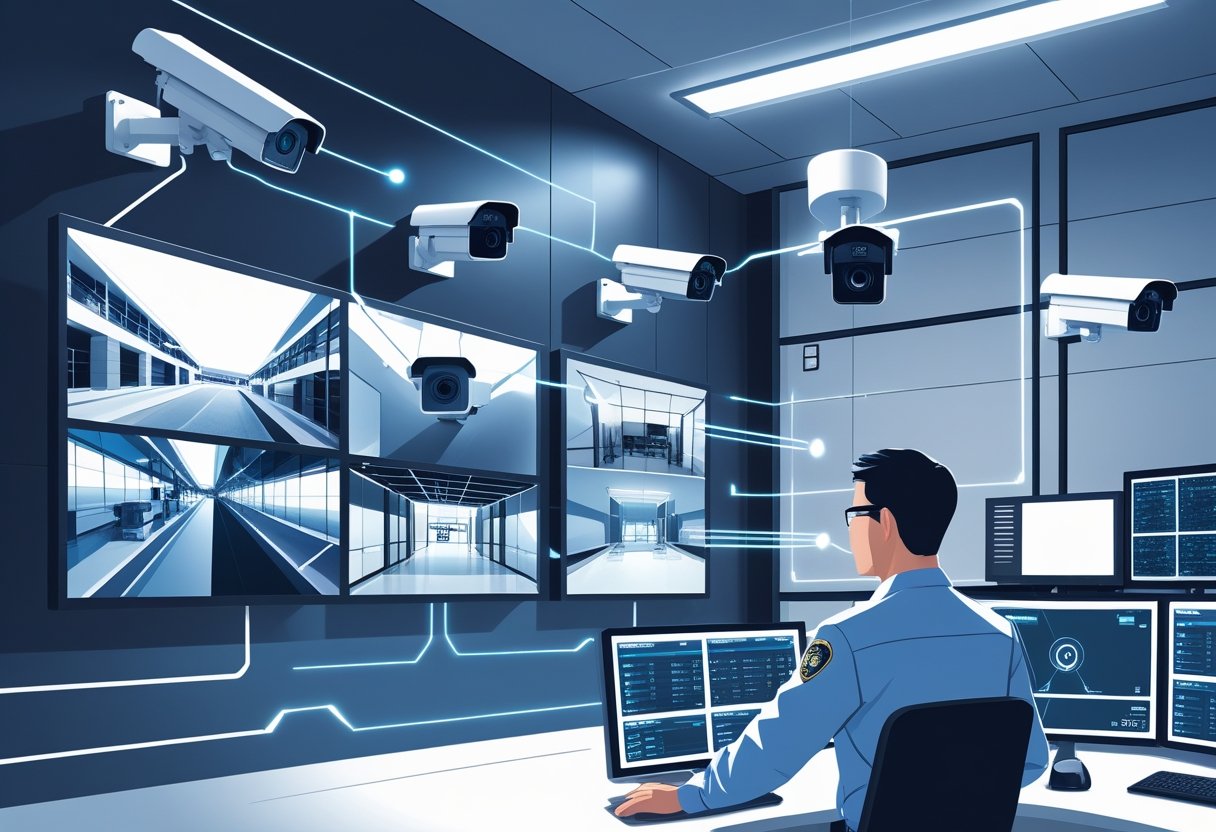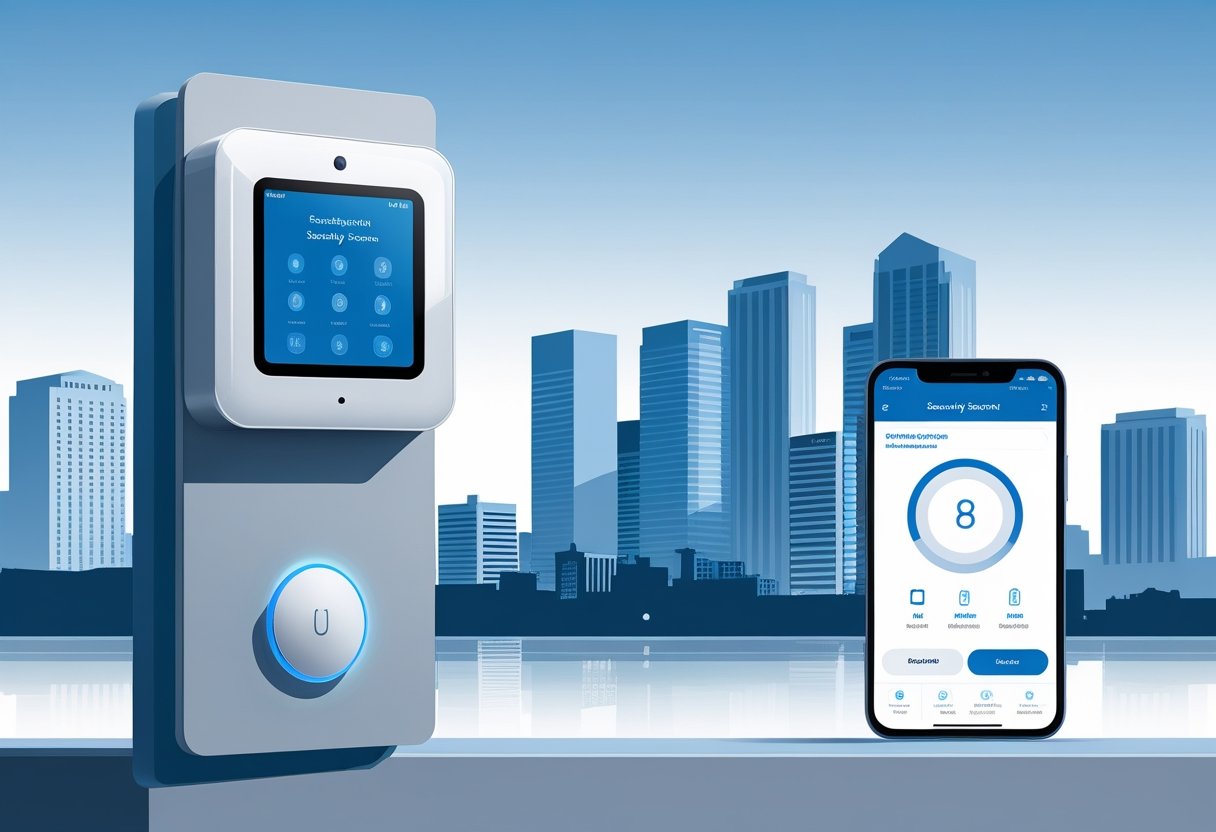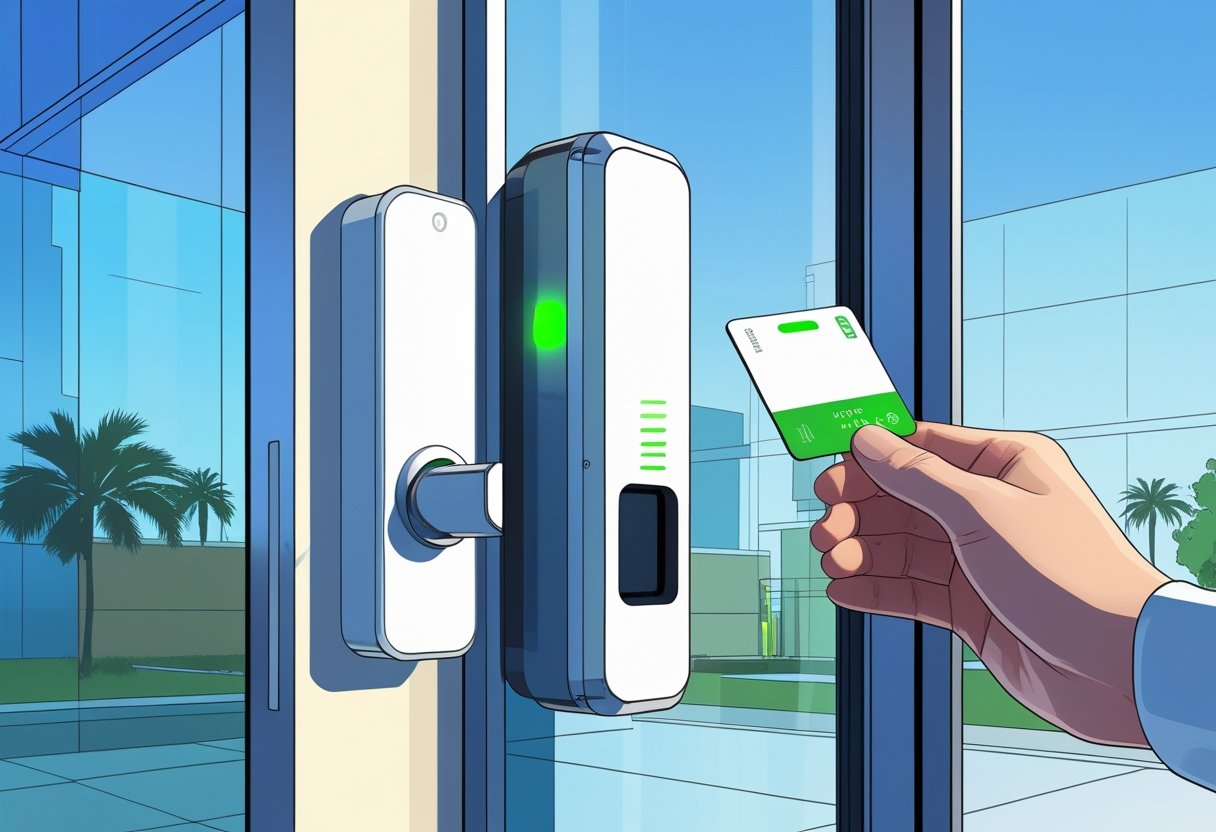In today's rapidly evolving security landscape, the integration of video surveillance and alarm systems is essential for effective threat management. By linking these two technologies, you can enhance your overall security, improve response times, and create a cohesive approach that addresses potential vulnerabilities. This integration enables real-time alerts and allows for immediate action when suspicious activities are detected.
As a resident or business owner in the greater Houston area, taking advantage of integrated security solutions can provide significant peace of mind. With a seamless connection between video feeds and alarm triggers, you can ensure that your property is monitored effectively, allowing security personnel to respond swiftly and efficiently.
The benefits of video surveillance and alarm integration extend beyond just deterrence. This system provides you with valuable data analysis, enabling smarter decision-making regarding your security strategy. Whether you're concerned about unauthorized access or want a comprehensive view of your property, this advanced integration is a vital component of your security plan.
Fundamentals of Video Surveillance and Alarm Integration
Video surveillance and alarm integration are essential elements in creating a cohesive security system. By connecting these two technologies, you can enhance your security solution's effectiveness and response capabilities.
What Is Video Surveillance and Alarm Integration?
Video surveillance and alarm integration refers to the process of linking video cameras with alarm systems to create a unified security platform. When an alarm sounds, it can trigger specific video cameras to start recording, allowing for real-time monitoring. This integration enhances situational awareness by providing visual context to alarm events.
In a typical integration, your alarm panel not only alerts you to unauthorized access or environmental hazards but also provides video feeds from relevant cameras. This combination enables you to assess the situation and respond accordingly.
Core Components of an Integrated Security System
An integrated security system generally comprises several key components. These include:
- Video Surveillance Cameras: These capture real-time footage and can be designed for indoor or outdoor use.
- Alarm Panel: This central hub manages alarm signals from various sensors, such as motion detectors or door/window sensors.
- Monitoring Software: This allows you to view and manage both video feeds and alarms in one interface.
- Communication Network: A stable network connects all components, allowing seamless data sharing.
Effective integration leverages these components to create an intelligent security environment tailored to your needs.
Key Benefits of Integrating Alarms and Video Surveillance
Integrating alarms with video surveillance offers multiple advantages.
- Improved Response Times: When alarms trigger, associated cameras can immediately provide visual context, speeding up response actions.
- Centralized Control: You can manage all aspects of your security solution from a single interface, simplifying operations.
- Enhanced Verification: Video footage allows you to verify alarm events before taking action, reducing false alarms.
- Increased Deterrence: The presence of both alarms and surveillance can act as a powerful deterrent against potential intruders.
In summary, integrating these systems creates a more efficient and effective security strategy, especially crucial in the greater Houston area.
Key Technologies and System Architecture
In today's complex security landscape, integrating various technologies into a cohesive system enhances protection and operational efficiency. This section covers essential components, from access control systems to advanced video analytics, essential for robust security frameworks.
Role of Access Control Systems in Integrated Security
Access control systems serve as the backbone of integrated security solutions. They regulate entry to sensitive areas by using credential-based verification methods.
Modern systems often include biometric readers, card swipes, and mobile access technology. When connected to video surveillance, you gain real-time visibility and audit trails for every entry or exit.
This integration allows for enhanced monitoring and rapid response to unauthorized access attempts. With reports generated from these systems, you can regularly assess security measures and reinforce them where necessary, ensuring only authorized personnel have access to critical zones.
Alarm Panel and Intrusion Detection Integration
Alarm panels are crucial for managing your security system's response to potential threats. By integrating intrusion detection systems with video surveillance, you create a more responsive security environment.
When an alarm is triggered, it can automatically activate specific cameras, allowing for instant assessment of the situation. This connection enhances the effectiveness of your monitoring setup, enabling security personnel to act swiftly in response to real-time alerts.
Moreover, advanced alarm systems utilize intelligent video analytics to differentiate between false alarms and actual threats, reducing unnecessary interventions and streamlining your security operations.
Advanced NVR and Video Analytics
Network Video Recorders (NVRs) play a pivotal role in modern surveillance systems. They not only store video footage but also facilitate advanced video analytics functionality.
With features like motion detection, people counting, and behavior analysis, NVRs can significantly enhance your situational awareness. Intelligent video analytics can identify unusual patterns or behaviors, allowing for proactive security measures.
You can access live feeds and stored videos through remote interfaces, making it easier to monitor your premises from anywhere in the Greater Houston area. This capability is crucial for timely incident responses and efficient management of security resources.
Cloud-to-Cloud Connectivity in Modern Security Solutions
Cloud-to-cloud connectivity is transforming how security systems operate, offering enhanced flexibility and scalability. This technology allows different security systems—like video cameras and access controls—to communicate through cloud platforms seamlessly.
By leveraging cloud integration, you can access your security data from any location and share it with authorized personnel instantly. This streamlines operational efficiency and enables real-time decision-making.
Additionally, cloud solutions often provide enhanced storage capabilities, reducing the need for extensive on-site hardware while ensuring your data is always backed up and secure. This feature is especially critical for businesses looking to enhance their security posture without overwhelming their physical infrastructure.
Operational Advantages and Proactive Alerts
Integrating video surveillance with alarm systems presents significant operational advantages. This connection enhances security measures, providing you with proactive alerts and efficient event management. You can mitigate risks more effectively and respond to incidents in real-time.
Proactive Alerts and Real-Time Event Responses
Proactive alerts are essential for modern security solutions. When an alarm triggers, the integration with video surveillance allows you to receive instant notifications, enabling you to assess the situation quickly. By leveraging AI-driven analytics, these alerts can target specific threats, minimizing false alarms.
Real-time event responses ensure that you can address issues as they unfold. The capability to view live video footage gives you insight into the nature and severity of the incident. This immediacy enhances your ability to react appropriately, whether that means contacting law enforcement or deploying a security team.
Event-Based Video Verification and Alerts
Event-based video verification streamlines your security operations. This system allows you to review relevant video footage before responding to alerts, increasing the accuracy of your actions. For example, if a motion sensor is triggered, you can access live or recorded video to verify whether a legitimate threat exists.
Incorporating this layer of verification cuts down on unnecessary responses. Your security personnel can make informed decisions based on visual evidence, which reduces confusion and enhances operational efficiency. This technology transforms reactive measures into proactive management, allowing you to stay ahead of potential issues.
Reducing False Alarms with Integrated Systems
Integrated security systems are vital for reducing false alarms. Traditional alarm systems often generate unnecessary alerts, leading to wasted resources and alarm fatigue. By combining video surveillance with alarm systems, you create a more intelligent monitoring framework.
This integration allows for smarter detection algorithms that differentiate between harmless disturbances and genuine threats. Consequently, you can reduce false alarms significantly, leading to improved response times and resource allocation. Your team can focus on critical events, enhancing the reliability of your security measures.
Design and Implementation Best Practices
Effective video surveillance and alarm integration requires a solid foundation in both planning and execution. Addressing essential areas like system architecture, ensuring compatibility with existing technologies, and maintaining flexibility in deployment is crucial for a robust security system.
System Planning and Architecture
When planning your video surveillance and alarm integration, start by defining your security objectives. Identify critical areas needing coverage and develop a comprehensive system architecture.
Utilize a Network Video Recorder (NVR) to manage video feeds efficiently. This ensures all data is stored securely and can be accessed easily when needed.
Incorporate access control systems that enable user authentication for entry points. This ensures only authorized personnel can access sensitive areas.
Design the layout to facilitate optimal camera placement and reduce blind spots. Use tools like site maps to visualize camera locations and monitor lines of sight.
Integration of Legacy and New Technologies
Seamless integration of legacy systems with new technologies is vital for maximizing your security investment. Assess existing alarm panel and camera capabilities before deploying new equipment.
Use open architecture solutions that support both older and newer devices. This approach reduces the need for complete system overhauls, saving you time and resources.
Consider protocols like ONVIF, which allow various devices to communicate smoothly, regardless of manufacturer. This compatibility ensures you can add new technologies as needed without compromising system integrity.
Training staff on both legacy and new systems will ensure they can manage and respond effectively to alerts and incidents.
Ensuring Scalability and Flexibility in Deployment
Your security system should be designed for scalability and flexibility. As your needs evolve, having a system that can grow with you is paramount.
Choose modular components so you can easily add or upgrade elements like cameras and access control devices. Consider systems with cloud functionality, allowing for remote management and easier adjustments.
It's beneficial to implement a layered security approach. This can involve combining cameras with advanced alarm systems to create comprehensive protection.
Always plan for future integration possibilities, ensuring your architecture can support additional features like AI analytics without major disruptions to your current setup.
Challenges and Future Trends in Integrated Security
As organizations increasingly adopt integrated security systems, they face specific challenges that must be addressed to ensure effective functionality. Key areas include compatibility of existing systems, advancements in video analytics, and the rise of cloud-based solutions for management and storage.
Addressing Integration and Compatibility Issues
One of the primary challenges you will encounter is ensuring that various systems work seamlessly together. Many businesses have legacy equipment or different brands of security solutions that may not communicate effectively.
To address these issues, standardization of protocols and the use of middleware that facilitates interoperability are essential. This approach allows for easier integration of access control systems with video surveillance setups.
Establishing a unified platform can enhance user experience and provide comprehensive security management across all sites.
Emerging Trends in Intelligent Video Analytics
Intelligent video analytics is rapidly evolving, changing the landscape of security monitoring. You can leverage these analytics for real-time threat detection and automated alert systems.
Advanced algorithms can analyze video feeds for abnormal behavior or unauthorized access, allowing for quicker responses. This technology enhances traditional surveillance by turning data into actionable insights that improve security outcomes.
Moreover, AI-driven analytics can help with traffic monitoring, crowd detection, and even facial recognition, providing a safer environment for your facilities.
Cloud-Based Solutions and Remote Management
The adoption of cloud-based solutions is transforming how security systems are managed. By utilizing these platforms, you gain access to remote management capabilities, enabling you to monitor and control security devices from anywhere.
This allows for easier scalability, meaning you can add or modify services as needed without significant infrastructure changes. Additionally, cloud storage for video footage reduces the risk of data loss, providing a reliable backup for investigations.
With secure data transmission and storage, you can implement robust security measures that comply with regulations while improving response times for incidents.
Frequently Asked Questions
When considering video surveillance and alarm integration, various factors come into play. Understanding the key benefits, compatibility issues, and data privacy implications will help you make informed decisions for your security needs.
What are the key benefits of integrating video surveillance with alarm systems?
Integrating video surveillance with alarm systems enhances security by offering centralized control. This allows for real-time monitoring of events and immediate verification of alarms, reducing false alerts.
You gain improved situational awareness. Video feeds can be accessed simultaneously with alarm triggers, enabling quicker response times to potential threats.
How does alarm triggering work in a combined video surveillance and alarm system setup?
Alarm triggering in an integrated setup occurs when a sensor detects unusual activity. This action prompts the alarm system to activate while simultaneously sending alerts to the video surveillance system.
The cameras can then focus on the triggered area to provide live footage. This immediate access ensures that security personnel can assess the situation quickly.
Can existing video surveillance systems be upgraded to integrate with alarm technologies?
Yes, many existing video surveillance systems can be upgraded to integrate with newer alarm technologies. This involves assessing your current infrastructure and determining compatibility with integration solutions.
Working with a local service provider in the greater Houston area can guide you through the necessary upgrades. They will recommend the best equipment that aligns with your existing systems.
What are the compatibility considerations when integrating video surveillance with alarm systems?
Compatibility considerations include ensuring that both systems can communicate effectively. Check for open protocols and standards that facilitate integration.
It's essential to confirm that your alarm sensors and cameras can work together seamlessly. Consulting with a security expert can assist in identifying any potential compatibility issues.
How does the integration of video surveillance and alarm systems enhance security response times?
Integration allows for faster security responses due to immediate access to data. When an alarm is triggered, video footage can be instantly reviewed, providing context to the event.
This quick access enables security teams to assess situations and respond appropriately. Benefits include reduced response times and improved incident management.
What are the data privacy implications of implementing an integrated video surveillance and alarm system?
Implementing integrated systems raises important data privacy considerations. You must comply with relevant laws and regulations regarding video surveillance and data storage.
Increased monitoring can also lead to privacy concerns among employees and visitors. Establishing transparent policies and ensuring compliance will help alleviate these concerns.
.svg)



.svg)


.svg)



